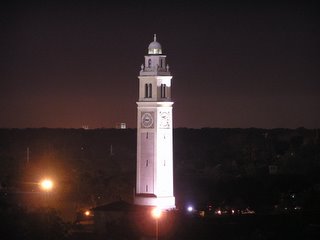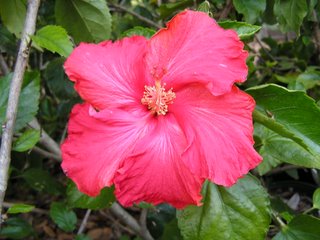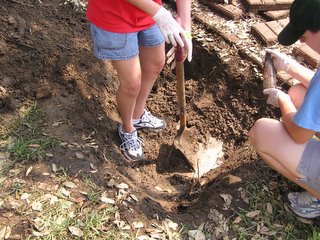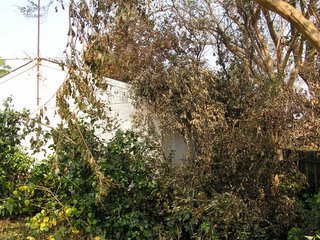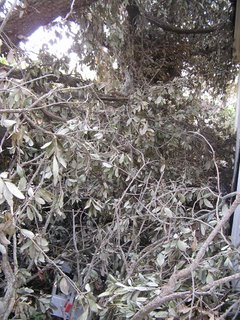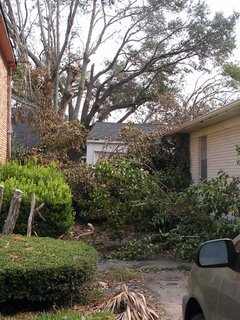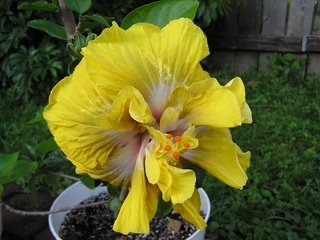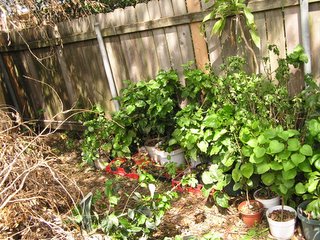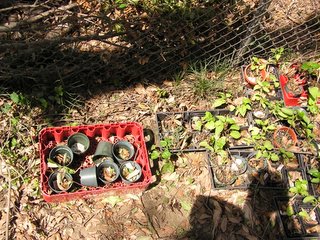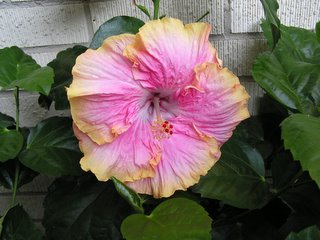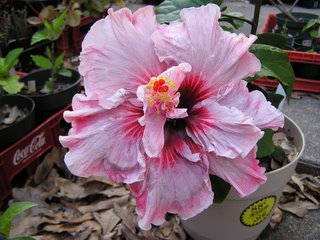
These pictures are in reverse order showing the color changes this hibiscus bloom undergoes during the day. The bottom photo shows the bloom when it first opens is mostly pink, As the day goes on, the pinkness gets lighter and the outer edge becomes a pastel orange yellow as shown in the middle photo. The top photo is the end of the day when the pink is very faded and the outer edge is now more yellow.

This Patrick seedling is from the same 2002 pod that produced Jamila and Red Nectar. We call it Jean's Sunset as the colors are sunset colors. This upright bush has small leaves and thin branches. It blooms a lot, but never at show time. It almost died from Katrina as most of its leaves dried out and turned brown, but it resprouted new leaves and has come back

complete with flower buds. On a few occasions, Father Gerlich has remarked that this was an interesting bloom. That's a great seal of approval!
We were able to get one cutting to root and produce a vigorous small bush. We gave it to a fellow collector to preserve the line in case of something bad happening to the original plant. Well, Katrina was bad and killed all the plants of my fellow collector friend. Now we are back to one plant.
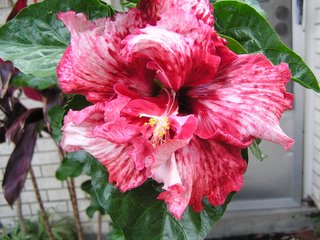 Before Hurricane Katrina, our most thirsty plant was the Cherry Ice hibiscus. No matter how often we watered Cherry Ice, the pot was always the first to dry out and have the plant wilt. Cherry Ice also likes to grow straight and tall. As part of our evacuation strategy, when we wedged all our plants into the back corner of yard behind the garage, the tallest plants go up against the fence. As such, Cherry Ice was put in the corner. On our initial trip back to Kenner, it had only dead leaves. We figured it had dried up and died. In the last weekend of October 2005, we cleaned up all the tree branches covering our patio in front of our garage. We had a little garden area between the driveway and our neighbor's fence off the patio. We had four in ground garden variety hibiscus and smaller flowering plants in this garden patch. After seven weeks of being underneath a six foot high pile of heavy oak tree branches, the little garden are had four badly damaged, but alive hibiscus, some Louisiana Iris and daylily leaves and that was it! We decided to bring out some of the bigger pots from behind the garage and fill in all the barren ground area of this little garden patch. As we retrieved plants in that northwest corner, we discovered that our Cherry Ice had not died; only the high branches that we could see were dead. The first foot of the plant was covered with a lot of vigorous new growth. Unbelievable! Cherry Ice’s bloom is one of the prettiest around. We have not had much success getting it to bloom, but when it does, like this May 2005 bloom, it is well worth the wait.
Before Hurricane Katrina, our most thirsty plant was the Cherry Ice hibiscus. No matter how often we watered Cherry Ice, the pot was always the first to dry out and have the plant wilt. Cherry Ice also likes to grow straight and tall. As part of our evacuation strategy, when we wedged all our plants into the back corner of yard behind the garage, the tallest plants go up against the fence. As such, Cherry Ice was put in the corner. On our initial trip back to Kenner, it had only dead leaves. We figured it had dried up and died. In the last weekend of October 2005, we cleaned up all the tree branches covering our patio in front of our garage. We had a little garden area between the driveway and our neighbor's fence off the patio. We had four in ground garden variety hibiscus and smaller flowering plants in this garden patch. After seven weeks of being underneath a six foot high pile of heavy oak tree branches, the little garden are had four badly damaged, but alive hibiscus, some Louisiana Iris and daylily leaves and that was it! We decided to bring out some of the bigger pots from behind the garage and fill in all the barren ground area of this little garden patch. As we retrieved plants in that northwest corner, we discovered that our Cherry Ice had not died; only the high branches that we could see were dead. The first foot of the plant was covered with a lot of vigorous new growth. Unbelievable! Cherry Ice’s bloom is one of the prettiest around. We have not had much success getting it to bloom, but when it does, like this May 2005 bloom, it is well worth the wait.


